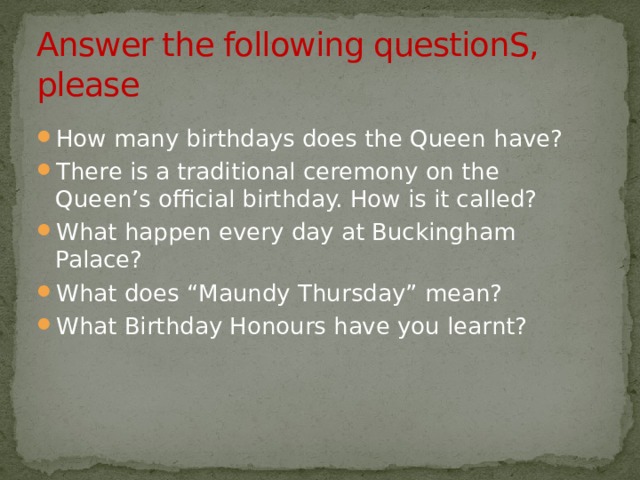Работа представляет собой мультимедийный продукт, выполненный в Microsoft Power Point. Содержит материал о Великобритании, королевской семье и традициях британцев. Цель – обучить учащихся трансформационному переводу, добыть новые знания о стране, обобщить уже известный материал. Сопровождается фотографиями страны, королевской семьи, а также описанием Великобритании, традиций королевской семьи. Пособие может быть использовано на уроках для изучения нового материала, повторения и обобщения знаний.v
Создайте Ваш сайт учителя Видеоуроки Олимпиады Вебинары для учителей
"Королевские традиции"
Вы уже знаете о суперспособностях современного учителя?
Тратить минимум сил на подготовку и проведение уроков.
Быстро и объективно проверять знания учащихся.
Сделать изучение нового материала максимально понятным.
Избавить себя от подбора заданий и их проверки после уроков.
Наладить дисциплину на своих уроках.
Получить возможность работать творчески.
Просмотр содержимого документа
«"Королевские традиции"»
Полезное для учителя
Распродажа видеоуроков!
1510 руб.
2510 руб.
1610 руб.
2690 руб.
1690 руб.
2820 руб.
1510 руб.
2510 руб.
ПОЛУЧИТЕ СВИДЕТЕЛЬСТВО МГНОВЕННО
* Свидетельство о публикации выдается БЕСПЛАТНО, СРАЗУ же после добавления Вами Вашей работы на сайт
Удобный поиск материалов для учителей
Проверка свидетельства
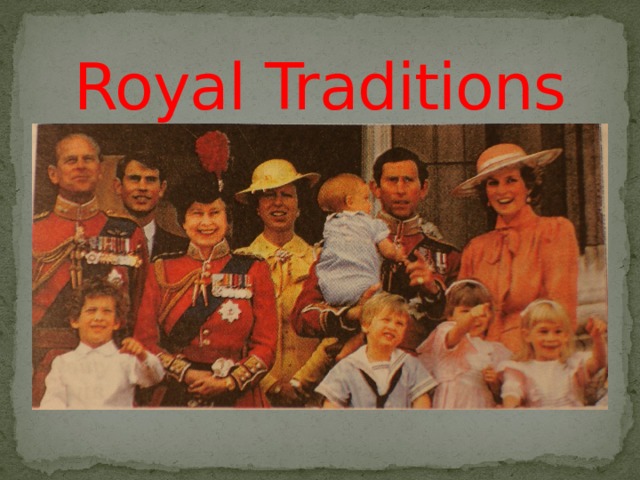
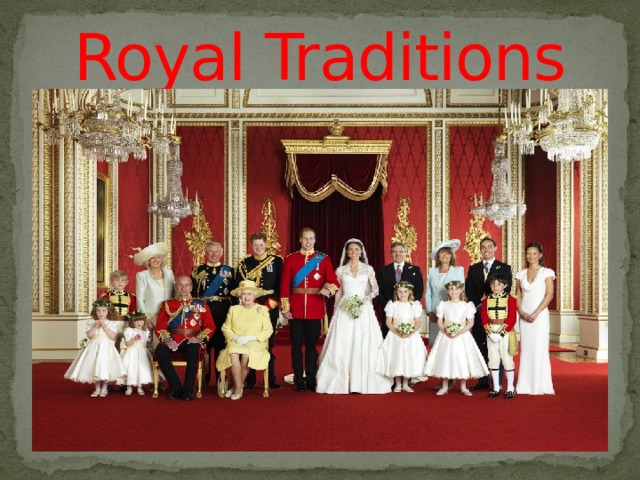
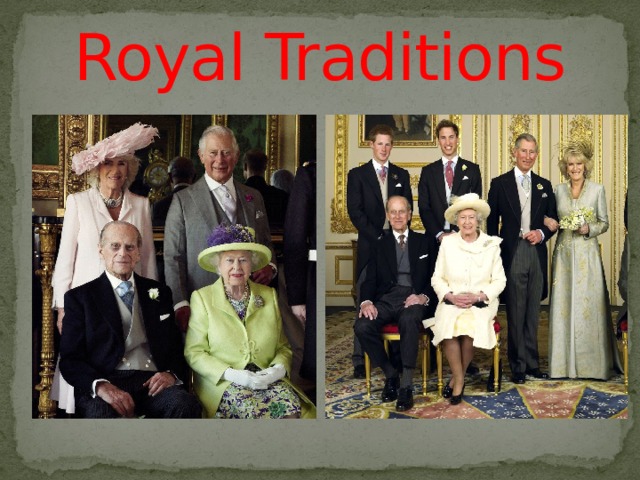
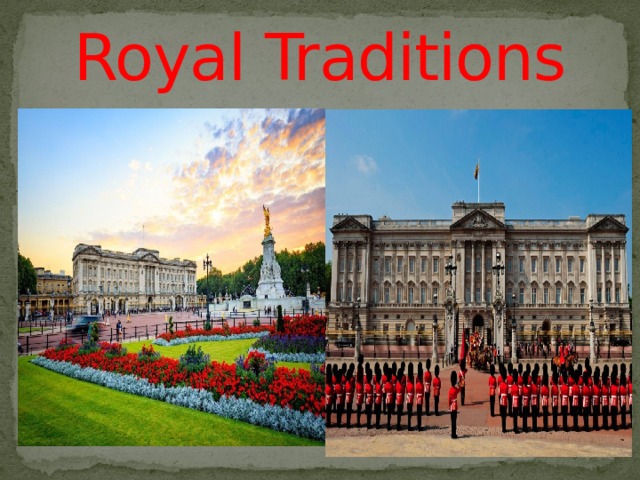
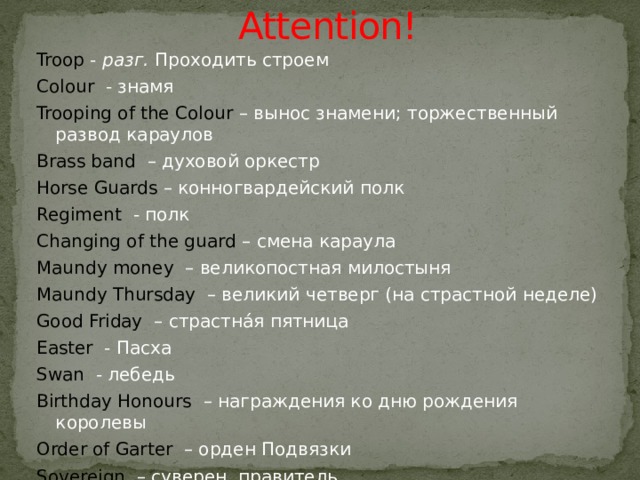

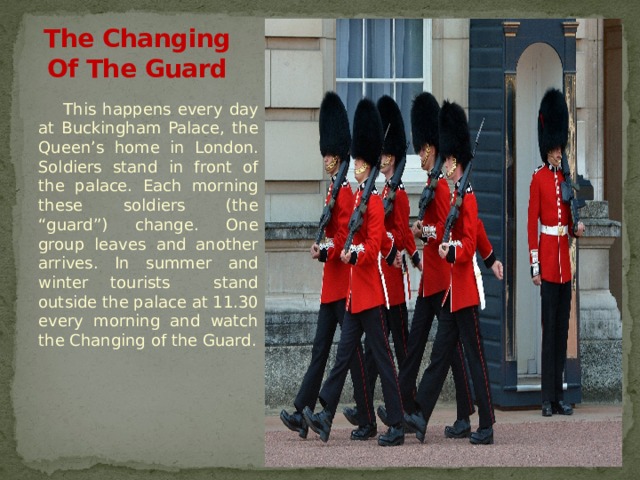
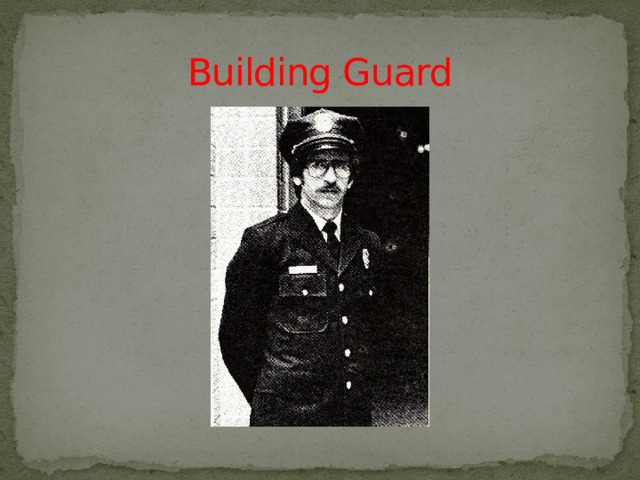
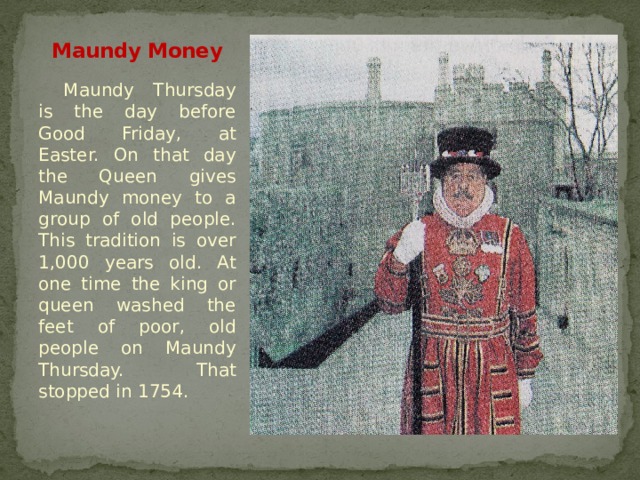

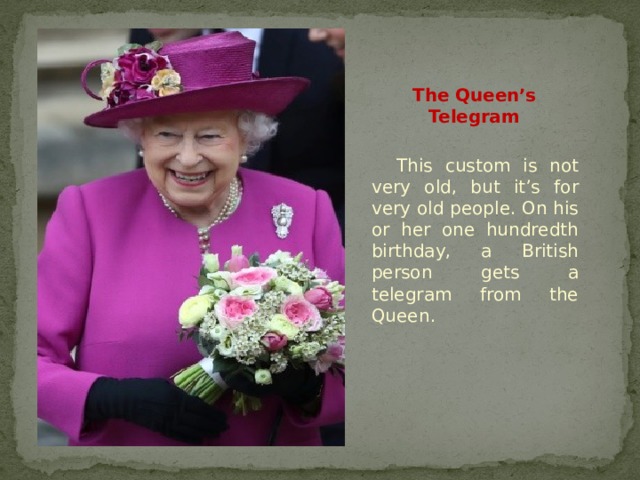
![The Birthday Honours List And The New Year’s Honours List Twice a year at Buckingham Palace, the Queen gives titles or “honours”, once in January and once in June. There are a lot of different honours. Here are a few: C.B.E. – Companion of the British Empire O.B.E. – Order of the British Empire M.B.E. – Member of the British Empire (These honours began in the nineteenth century. Then Britain had an empire.) Knighthood – a knight has “Sir” before his name. A new knight kneels in front of the Queen. She touched first his right shoulder, then his left shoulder with a sword. Then she says “Arise, Sir…[his first name]”, and the knight stands. Peerage – a peer is a lord. Peers sit in the House of Lords. That’s one part of the Houses of Parliament. The other part is the House of Commons. Peers call the House of Commons “another place”. Dame/Baroness – these are two of the highest honours for a woman.](https://fsd.kopilkaurokov.ru/up/html/2020/11/23/k_5fbbf0a2cc55e/img_user_file_5fbbf0a3798cd_11.jpg)

